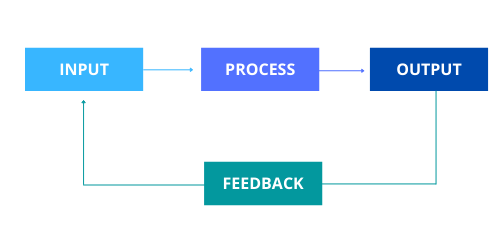Three gut-wrenching clinical scenarios: one, the postmenopausal patient with soul-destroying faecal incontinence you just can’t get a handle on. Two, the young woman with IBS, sentenced to a frugal restricted diet and miserably lacking in social life because she reacts to everything she eats. Three, the man not even forty whose colonoscopy just showed 47 polyps, staring down the barrel of twice-yearly colonoscopies for the foreseeable future and the fear and dread of it turning south.
Q: What do these three cases have in common?
A: The logical next step: Gut microbiome support.
What is gut microbiome support, who does it and why? This post will answer these questions in a nutshell. But let’s start with WHY it should be YOU who is driving this.
The Who and the Why of Gut Microbiome Support
The gut microbiome is no longer a brand new field of research. We now have decades worth of research helping us to understand what makes a gut microbiome healthy and what makes it unhealthy. When healthy, it promotes normal bowel function, good immune support and healthy metabolism. In contrast, the picture of an unhealthy microbiome includes gut inflammation, systemic inflammation, cardiovascular disease and fatty liver. The gut microbiome is now seen an additional “organ” of the body. As health professionals, we are perfectly positioned to convey these research findings to our patients to help them achieve their health goals. Despite this, our patients are not receiving gut microbiome education from their health care team. The GP is not doing it. The gastroenterologist is definitely not doing it. It needs to be you doing it!
Getting to the Guts of Microbiome Support: Two Strategies
There are two ways of approaching gut microbiome support. Neither is exclusively “right”; which you choose will depend on patient factors and practitioner factors.
Approach #1: N of 1 Trials Based on Research and Clinical Reasoning
This is what we do every day in clinical practice as clinicians, whether we are experienced or just starting off in the field. We gather the data from our patients. We scour our brains for the relevant theory, maybe do a PubMed search to see what the research is saying, and then apply a program based on the synthesis of these things. We alter the program based on the feedback from the patient and our reassessment. This is the simplest application of a feedback loop.
This exact process of N of 1 trials is what we use with Gut Microbiome Support. But before you can search your brain for the relevant theory, you need to learn it. And that’s where the online course Gut Critters: A Critical Clinician’s Guide To Supporting the Gut Microbiome comes in.
Advantages of this approach: Simple. Quick to see results, if you get it right. Economical solution.
Disadvantages of this approach: If your first two N of 1 trials don’t work, you may start getting nervous and the patient may start getting frustrated. You may want to cut your losses now and proceed to Approach #2: Gut Microbiome Testing.
Approach #2: Gut Microbiome Testing
“Test, don’t guess.” This wisdom of this aphorism is usually spot-on. N of 1 trials may be simple, and they may be as far as you choose to go as a clinician before referring on. But if you have greater interest and are more invested in the outcome, you might continue to learn the theory of guiding the patient based on the result of their gut microbiome testing. But before we continue, let me proactively dispel a myth…
Mythbusting: “Gut microbiome testing is unreliable! Research is too early to tell us what to do with the findings!”
Let me dispel this myth categorically. One, the current available microbiome testing is more advanced even than what has been used in the majority of the research for the past twenty years. The testing I use in clinic is advanced, accurate and based at a university. And so much research has now accumulated it is irresponsible to ignore it. But of course you do not want to over-extrapolate and give the patient a difficult or expensive program that lacks adequate research support. This is where a rational approach to learning testing and research application is required. It is where the Gut Critters online course for health professionals (not consumers!) comes in.
So what can Gut Microbiome Testing tell us?
- If the patient has unpleasant bugs that are not officially pathogens contributing to their symptoms.
- If they are high in markers that promote intestinal hyperpermeability or “leaky gut”.
- If they are at risk of the high endotoxin circulation that drives diabetes and fatty liver disease.
- If they are at risk of gut inflammation and poor long-term gut health.
- If there is a “gut reason” for their poor medication tolerance or estrogen overload symptoms.
- If there is a “gut bug reason” for their irritable bowel symptoms or chronic constipation.
In summary, there are two different angles you can take to addressing the gut microbiome to help the patient reach their goals. Pick one, because if you don’t, probably no one else will. And doing something is infinitely better than doing nothing!
A Caveat to Addressing Your Patient’s Gut Microbiome
“Doing something” is only any good if there is at least a good chance it will help. Good intentions are not enough when your patient’s time and money is at stake! I have seen well-meaning naturopaths and integrative GPs provide gut microbiome support programs that are not substantiated by research.
So how do you know what will help? Simple: appropriate training. While the gut microbiome is complex – and as yet incompletely understood – a rational approach to helping it doesn’t have to be. Clear, manageable training for allied health professionals, doctors and nurses is available in the Gut Critters online course.
Don’t get lost in the black hole of the internet’s endless baseless blogs, contradictory articles and company-sponsored probiotic “education”. Take a rational, structured approach based on available research and decades of clinical experience and get armed with the tools you need to get your patient’s function to the next level via gut microbiome support. Click here for more information on the Gut Critters online course.



Join our Health Professional Socials